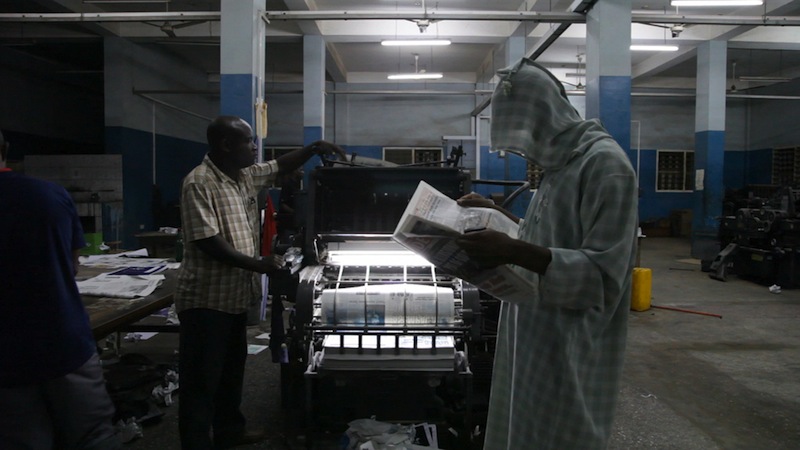By: Addison Wylie
If you haven’t heard of African journalist Anas Aremeyaw Anas, he’s doing a good job hiding his identity. Few have seen him face-to-face, but this is because his safety and his flourishing career depends on staying incognito. Even in Ryan Mullins’ documentary Chameleon, Anas’ face is either blurred out or obscured for good reason.
Anas’ groundbreaking investigative journalism mixes elements of crime-fighting. Using his ability to illustrate a story and set up successful stings, he’s been able to take down notorious criminals with the help of police and add closure to his lengthy pieces. Anas Aremeyaw Anas knows of the raised stakes when he involves himself this deeply, but he figures it’s all worth it if he can better Ghana’s society.
Chameleon is Ryan Mullins’ baby. He wears multiple hats on this production; including being the director of photography and editor aside from his duties as writer/director. Considering how immersed he is, it’s astounding how well the filmmaker is able to keep his distance from the intensity engulfing his documentary. Even when Anas refers to his off-camera presence, Mullins is able to redirect the focus with ease. It goes to show that detailed research still needs experienced filmmaking to keep a documentary afloat; an idea that Mads Brügger’s ballsy doc The Ambassador couldn’t comprehend.
Chameleon takes the viewer on a ride along through several of Anas’ missions and investigations. Mullins leans towards a more avant-garde presentation, allowing the planning and theorizing of Anas’ raids to describe the journalist’s personality and ethical outlook. Along the way, movie goers listen to brief interviews from others that state amazement towards Anas’ catalogue of achievements, but also visible concern for the journalist’s safety. An appearance by Anas Aremeyaw Anas’ worried father is one of Chameleon’s most memorable moments. Dad fights through teary eyes to tell the camera how proud he is of his son.
The documentary is set at the right speed, but at 78-minutes, Chameleon could’ve afforded to add a bit more. Those mentioned scenes where outsiders voice their apprehension are very interesting, and I would’ve liked to have seen more of those one-on-ones. I would’ve especially liked to hear how co-workers feel when they’re roped into the unpredictability of each investigation.
The documented missions in Chameleon end up being ranked on their difficulty of humanism challenge- whether that was intentional or not is unknown. It all starts with a fairly straightforward capture (Anas even admits how easy it was to catch the first perpetrator) and the film ends with an emotionally brutal finale where the writer struggles to define the choices he’s made.
Taking a hint from comments describing Anas’ as “the James Bond of journalism”, Mullins has assembled most of his movie in a way that replicates the beats of an espionage thriller without feeling phoney. The filmmaker flawlessly captures every angle he needs to during tense confrontations, and Florencia Di Concilio’s music highlights the urgency without overdoing it. Chameleon will please the arthouse crowd as well as movie goers looking for nail-biting suspense.
Do You Tweet? Follow These Tweeple:
Addison Wylie: @AddisonWylie



Be the first to comment